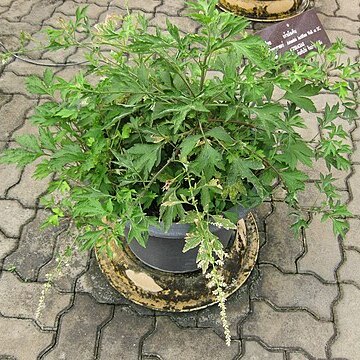A small shrub which keeps growing from year to year. It grows 1.5 m high and spreads 60 cm wide. It forms clumps. The leaf stalk is 20-25 cm long and reddish-purple. The leaves are green and divided. The flowers are small and cream. They occur in tall feather like groups.

